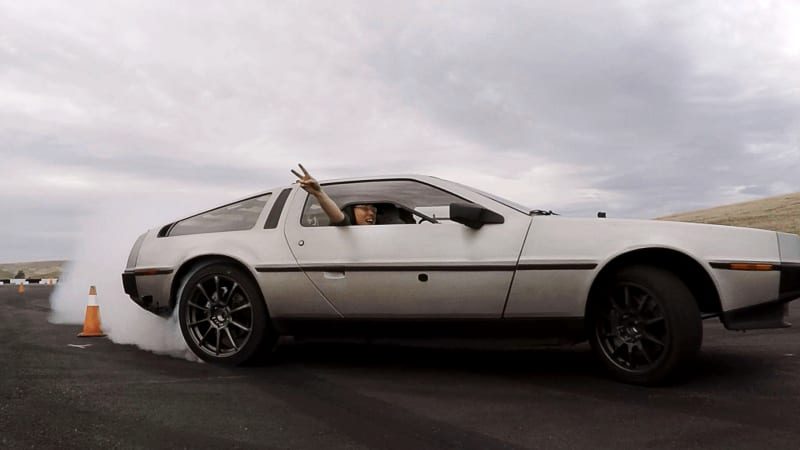Audi Repair Shop Doylestown
Call 267 279 9477 to schedule a appointment
Researchers at Stanford University built an electric, autonomous DeLorean DMC-12 and taught it how to drift like a pro. They’re burning rubber through a slalom course at the Thunderhill Raceway Park in California to learn more about how autonomous cars handle emergency maneuvers.
The project is the brainchild of mechanical engineers Jon Goh and Chris Gerdes. Stanford, a pioneer in the field of autonomous technology, explained the self-drifting DeLorean isn’t merely a fun stunt. It’s a serious research project that aims to make driverless software safer and better-rounded.
As of 2019, a vast majority of the autonomous prototypes deployed across the United States operate in relatively easy environments. There’s a good reason why Waymo launched its ride-hailing service on the outskirts of Phoenix: Snow and ice are entirely unheard of. The Chrysler Pacifica-based shuttles don’t need to know how to handle unexpected black ice or a foot and a half of snow.
Through drifting, the team hopes to develop autonomous technology capable of safety handling a slippery on-ramp, or an icy hill. Researchers are also seeking ways to teach driverless cars to perform evasive maneuvers, like avoiding the proverbial chicken crossing the road. The vast amount of data gathered on the 1.6-mile-long drifting course could shape the software that will seep into the automotive industry during the 2020s, and accelerate the development of driverless cars.

“We want the car to be able to avoid any accident that’s avoidable within the laws of physics,” Gerdes explained. “If we can conquer how to safely control the car in the most stable and the most unstable scenarios, it becomes easier to connect the dots in between,” Goh added.
Goh and Gerdes chose to start the project with a 1981 DMC-12 because they wanted a rear-wheel drive car they could easily modify. While a Chevrolet Camaro from the same era would have fit the bill, and it would have been far cheaper to buy than a DeLorean, the duo explained they also wanted something stylish and cool. They named the prototype MARTY, an acronym which stands for Multiple Actuator Research Test Bed for Yaw control, and which links the car to the 1985 movie “Back to the Future” that made the ill-fated, stainless steel-bodied DeLorean famous all around the world.
The anemic, 2.8-liter Peugeot-Renault-Volvo (PRV) V6 engine the DMC-12 originally shipped with was replaced by electric motors that channel over 500 pound-feet of torque to each rear wheel. Researchers also redesigned the suspension because the original setup was too soft, added computer-controlled steering technology that goes lock to lock in less than a second, and developed electronically-controlled brakes that are more precise than hydraulic ones. There’s a roll cage for good measure, too. Two GPS antennas on the roof tell the car its position with extreme accuracy. It follows set points along a predetermined route, so it doesn’t need to scope out the road ahead. All told, there’s not much under the sheetmetal that still carries a DeLorean parts number.
“The results so far are rather outstanding,” Gerdes concluded. Once researchers programmed the course’s GPS coordinates into the onboard computers that run the whole system, MARTY skid its way through the turns in a matter of minutes without knocking over a single cone. Even Frederic Aasbo, the 2015 Formula Drift world champion, was impressed by what he saw on the Thunderhill skidpad. We sense a man versus machine drift-off is looming on the horizon.
The engineers didn’t reveal what’s next for their technology. Stanford has dabbled in autonomy since Ph.D candidate James Adams built what later became known as the Stanford Cart in 1961, and Gerdes recently opined “we’re about 90% of the way to our driverless future.”
from Autoblog https://ift.tt/39d43SC
